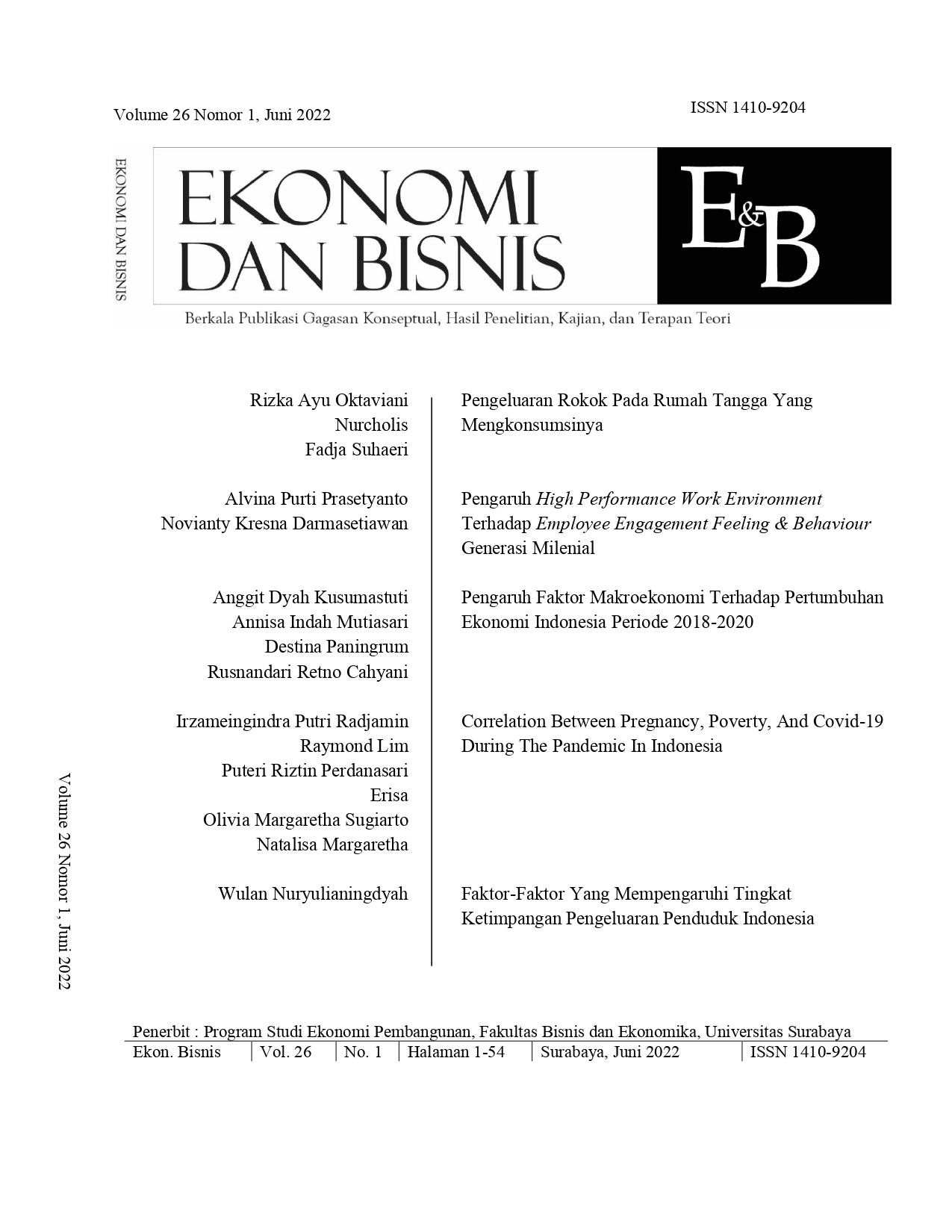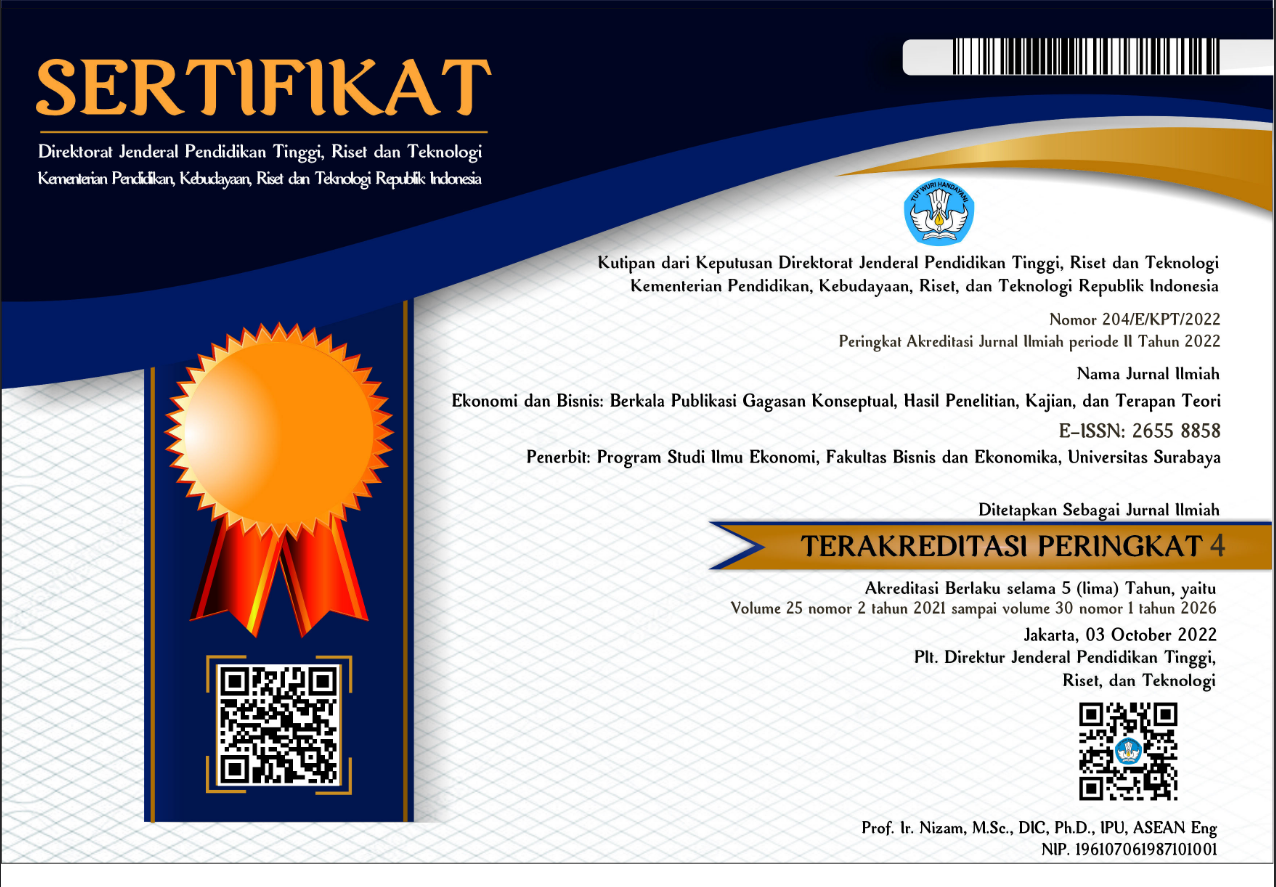CORRELATION BETWEEN PREGNANCY, POVERTY, AND COVID-19 DURING THE PANDEMIC IN INDONESIA
 Abstract Views:
430 times
Abstract Views:
430 times
 Radjamin, etc Downloads:
291 times
Radjamin, etc Downloads:
291 times
Abstract
The COVID-19 pandemic has raised several social issues in every global sector. One of the social issues is the fluctuation of fertility rates that varies among developed and developing countries during the pandemic. This article examines the casual correlation between COVID-19, poverty, and pregnancy. This study seeks to understand whether there is either no correlation, one-way correlation, or two-way correlation between the variables by adopting the quantitative-descriptive method using a Pair-Wise Granger causality test. Even though COVID-19 raises concern for females to have a kid globally, Indonesia shows the opposite result that the pandemic affects pregnancy.
Downloads
References
Becker, G., & Lewis, H. (1973). On the Interaction between the Quantity and Quality of Children. Journal of Political Economy, 81(2), 279-288. Retrieved from https://www.jstor.org/stable/1840425
Easterlin, R. A., & Crimmins, E. M. (1987). The Fertility Revolution: A Supply-Demand Analysis. review, 15(1), 157-161.
Granger, C. W. (1969). Investigating causal relations by econometric models and cross spectral methods. Econometrica, 37, 424-438.
Granger, C. W. (1988). Some Recent Developments in a Concept of Causality. Journal of Econometrics, 39, 199-211.
Lin, T., Law, R., Beaman, J., & Foster, D. (2021). The impact of the COVID-19 pandemic on economic security and pregnancy intentions among people at risk of pregnancy. Contraception, 103(6), 380-385. doi:https://doi.org/10.1016/j.contraception.2021.02.001
Moaven, L., & Brown, J. (2021). COVID-19 "Baby Boom". Medical Journal, 214(8), 386-386. doi:10.5694/mja2.51010
Nurhidayati, R. P., & Pandin, M. (2021). Analysing Poverty during Covid-19 Pandemic in Indonesia Based on Historical Perspective. Preprints. doi:10.20944/preprints202106.0307.v1
Sharmiladevi, J., & Ali, M. (2013). A Granger Causality Analysis Between Foreign Direct Invesment and Economic Growth. Global Journal of Arts & Management, 3(1), 15-17.
Ullah, M., Moin, A. T., Araf, Y., Bhuiyan, A. R., Griffiths, M. D., & Gozal, D. (2020). Potential Effects of the COVID-19 Pandemic on Future Birth Rate. Front. Public Health, 8. doi:10.3389/fpubh.2020.578438
Wei, W. (2016). Vertical specialization and increasing productive employment: Comparing impacts of conventional trade and processing trade patterns on labor market in China. If probability value is less than any level, then the hypothesis would be rejected at that level., 71-138. doi:https://doi.org/10.1016/B978-0-08-100627-6.00004-7
Wiwad, D., Mercier, B., Piff, P., Shariff, A., & Aknin, L. (2021). Recognizing the Impact of COVID-19 on the Poor Alters Attitudes Towards Poverty and Inequality. Journal of Experimental Social Psychology, 93. doi:https://doi.org/10.1016/j.jesp.2020.104083

 DOI:
DOI:















